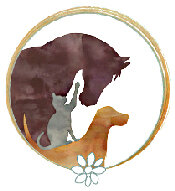
ACL Injury in Dogs
Anterior Cruciate Ligament (ACL)
The ACL is also called the Cranial Cruciate Ligament (CCL). A tear or rupture of the ACL/CCL is the number one orthopaedic issue in dogs. Surgical repair of torn ACLs is a multi-billion dollar industry in veterinary practices in North America. 30% of dogs that have surgery on one knee progress to have a tear in the other knee in one year or less. Surgery and prolonged post-operative recovery is a hardship for the dog and the owners and the cost can be a huge financial burden for people. The cost of surgical repair can vary from $2000 to $5000 depending on which surgery is done. And surgical repair does not guarantee success…. many dogs have problems a few years after surgery such as pain, lameness etc. Recently there have been some cases of dogs developing bone cancer (osteosarcoma) underneath the plate — used in the TPLO surgery — years after the initial surgery. Some surgeons are also starting to question the necessity of ACL surgeries in so many dogs.
Approximately 30 to 40% of Dr. Taylor's case load are dogs with an ACL problem.
Non-surgical conservative treatment can be successful depending on age, size of dog, severity of tear
and how recent the injury occurred. The cornerstone of treatment is addressing the underlying issue of Crooked Butt Syndrome (CBS) along with local osteopathic treatment of the knee joint and limb involved, addressing low back tension, etc. For ACL dogs Dr. Taylor also uses a combination of nutritional supplements, herbal and homeopathic medicines, essential oils, rest, modified activity and
therapeutic exercises.
“Dr. Taylor’s biggest passion now is PREVENTING ACL tears in the first place. She discovered that Crooked-But-Syndrome causes biomechanical changes in one leg that can set a dog up for future ACL injury.”
The way to prevent an ACL injury is to address CBS early, along with the reversible stretch in the ACL of the knee affected by CBS.
Treating a mild fixation at the level of the ankle joint (the fibula bone that goes from the ankle to the knee) actually 'resets' to 100% tightness the ligament that had only a subtle looseness to it. This is another magical osteopathic moment! This is for the dogs that are not even lame yet.
This subtle looseness can make the ligament weaker, and over months or years of normal activity in the young dog, that particular knee ligament is set up for a potential tear or rupture in the future. Although any cat or dog of any breed can develop an ACL problem it is much more common in the larger breeds of dogs and especially those with 'straight' hind legs (have less 'bend' in the knee). Examples of large breeds are: Labrador, Golden Retriever, Rottweiler, Border Collie, Akita, Bernese Mountain Dogs etc..
Assessing ACL
Fibula Bone
Treating Fibula
Assessing Knee Joint
Treating Fibula Close-up
Early osteopathic treatment in a dog without any symptoms can be an ‘insurance policy’ against a future ACL tear.
Canine Athlete :: A Testimonial
I have two competitive agility dogs, Cool Hand Luc, a 7.5 yr. old Kelpie and Zac, a 3 yr. old Border Collie. One year ago (2014) Luc was having a recurring injury and I needed a different avenue of treatment for him. Dr. Taylor’s treatment with osteopathic techniques and craniosacral therapy are what worked for Luc, he has been competitively healthy since our visits with her. Luc finished up this year with 3rd place in the 2015 AAC Regional Championships and 10th place in the recent 2015 AAC National Championships. Her treatments have also benefited Zac, who at 2.5 yrs. of age, finished up in 4th place at the 2015 AAC Regional Championships. Her method of approach to each dog is done with respect and gentleness. Dr. Laura’s explanations of the dog’s structure and her treatment are clear and concise. I highly recommend her!
Lynda Caughlin Fionavar :: Olds, Alberta





